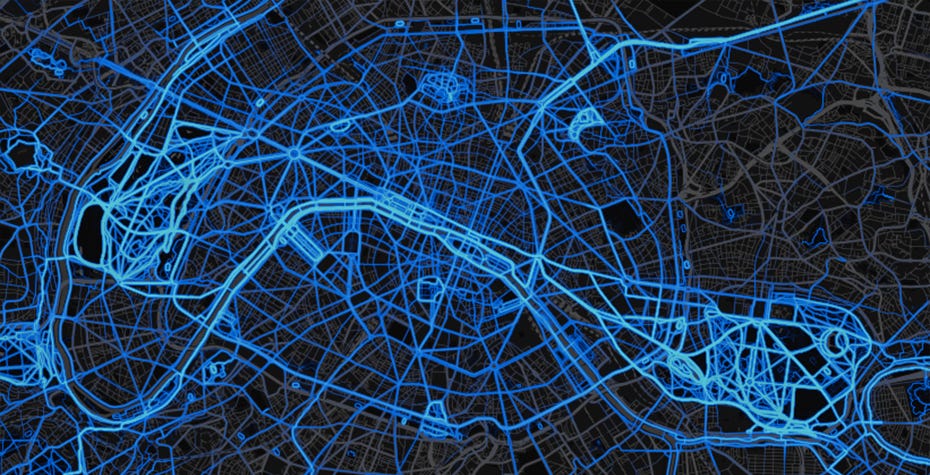By Sam Robinson, U.S. Salomon Squad Ambassador
We jog through the grey light of morning; the sun’s smudgy glow refracted by the fog. There are four of us, runners all, stepping through the bustle of downtown Oakland on a weekend morning. Heading toward the San Francisco Bay, we cut past the railroad tracks that edge the waterline and trot into the Port of Oakland. A vast, sprawling space of concrete and asphalt, of docks and tarmac, the port is the Bay Area’s entrepôt, a center for imported goods from across the Pacific.
As we run through the port, idle conversation fills the air with the pleasant chatter of mid-run banter. Plastic bottles of urine line the sidewalk—the vestige of truckers waiting to pick up cargo to be sent inland and across America. We jog past cranes that descend spider-like upon container ships. Longshoremen unpack the latest wares from Asian factories. The intricate dance of globalization pirouettes around us as we step over the cracked asphalt that lines the harbor.
My running friends and I were brought to the Bay Area by jobs, school, or family. We are part of a broader trend of urbanization, one that draws more and more people into cities and their suburbs. According to a 2014 study by the United Nations, 54 percent of the world’s population lives in urban areas. It is projected that by 2050 this figure will rise to 66 percent of global population. This means that more and more runners will adapt to the realities of urban space.

I think of this reality nowadays as I scroll through my social media feeds, which are saturated with images of mountain summits and forest singletrack. I watch friends tackle the Alps around Chamonix and the granite climbs of the Sierras. These are adventures I aspire toward, but they can’t possibly fill the daily yearning to explore my immediate surroundings. Even in the thicket of the world’s largest cities, I can almost always find safe and enjoyable running routes.
Here are some tips for urban running that I’ve learned over the years:
Follow the Water:Urban waterways are often lined by paths and walkways. Take for example, the canals of London, England. Before railroads wove the United Kingdom together in a mesh of steel, Britain was connected by canal. In centuries past, these narrow channels were conduits to move goods from the country’s interior to the cities on the coast. Now canals funnel a new type of labor as folks run on them for commutes, fitness, and to reach performance goals. For example, the footpath along Regent’s Canal in central London allows runners to move through the hub of Europe’s financial center both safely and scenically.

Waterways cut through most of the world’s cities. Paris, Denver, Berlin, Boston, and other cities all feature mixed-use paths that follow rivers and bays. Whenever I travel to a dense city, I look for routes alongside waterways. Strava Heatmaps are a quick way to find these potential runs. They’re a great way to see a town while avoiding crowds and automobile traffic.

Take to the Rails:As train travel has dwindled, many of the railroad lines around North America have been converted into multi-use greenways. In my college town, Greenville, South Carolina, the Swamp Rabbit Trail has become an integral space for cyclists and runners, connecting the downtown area with neighborhoods north of town. The former rail line has also become a boon for local businesses as the foot traffic has increased shopping and tourism along the path.
The most famous of these rails-to-trails projects is the High Line, a former freight line converted into an elevated park above the streets of Manhattan’s West Side. But many other cities feature similar projects. You can find urban trail systems throughout the United States using TrailLink, an online project by the Rails-To-Trails Conservancy, a nonprofit working to create a national network of trails from former rail lines.

Find Urban Parks:When I travel to a new city, I search Google Maps for the blocks of green-colored space that demarcate public parkland. City parks are often a runnable distance from the city center. One of my favorite city parks is Munich’s Englischer Garten, an expansive public park proximate to downtown. Created in the eighteenth century, the park is a verdant playground filled with dirt paths, quiet ponds, sunny meadows, and beer gardens. In my own neck of the woods, I’ve yet to discover all the hidden nooks of Golden Gate Park in San Francisco. And the open space that surrounds the Bay is an amazing respite to escape the city’s hustle and bustle. Local running stores are great resources to learn about the parks in a given city. Store employees are usually eager to tell you about their favorite green spaces for local running.
As traveler and Salomon athlete Ricky Gates once said, “You can find adventure anywhere in the world, but it takes a more inquisitive mind and curiosity to find adventure right out your front door.” And so we wander. Anchored to urban space by jobs, families, and the obligations of everyday life, we navigate the liminal space of waterways, underpasses, and converted railroads. These are the urban playgrounds of future. It’s not perfect… but what is perfection, anyway? City’s concrete landscapes are bestowed with new meaning as they become conduits for exploration. They are spaces to run wild.
I can’t wait to discover more.
THE GEAR I USE IN CITIES:












